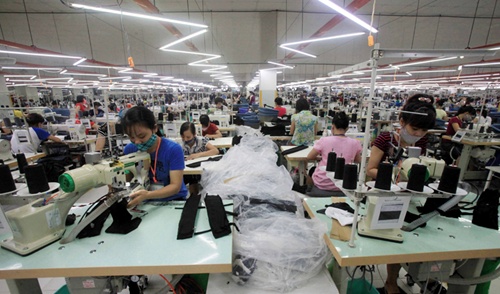Seaports, one after another, fall into private hands
Seaports, one after another, fall into private hands
As planned by the Ministry of Transport, many seaports have been put up for sale and many buyers are owners of privately run businesses.
It is highly possible that Do Quang Hien, chair of T&T Group, would become the largest shareholder of Quang Ninh Seaports, one of the largest ports in the north. The takeover is expected to be wrapped up in the first half of 2015.
Hien, the owner of the T&T Hanoi Football Club, was the only investor, who sent dispatches to the Ministry of Transport (MOT) and the government in early February, expressing willingness to buy state-held shares of Quang Ninh Seaport.
The last procedures to transfer Nha Trang Port from the Vietnam National Shipping Lines (Vinalines) to the new investor were wrapped up in the last days of 2014. The buyer is described as “one of the largest real estate firms in Vietnam”.
Sources said that Tran Tuan Loc, the owner of a newly emerged business with the headquarter in HCM City, has sent his words intimating that he wants to become the strategic shareholder of the Nghe Tinh Port in Nghe An province.
Meanwhile, Quy Nhon port in the central province has got the interest from a real estate firm in Hanoi.
Some months ago, the Ca Mau provincial People’s Committee proposed that the government transfer Nam Can Port to the local authorities for management, because a private business in the province wanted to invest in the international port.
Analysts noted that investors are now interested in seaports, after the State changed its mind about the state’s ownership ratio of seaports.
In early 2013, when considering Vinalines’ equitization plan, the state decided to hold more than 51 percent of shares of the seaports, and 75 percent of shares of the seven most important ports.
However, in late 2014, the State announced that it might withdraw all of its capital from some ports, except Hai Phong, Da Nang and Sai Gon, where it will still hold more than a 51 percent stake.
Nguyen Nhat, head of the Vietnam Maritime Bureau (Vinamarine), described it as a good move. He said the ports would be better managed when they fall into private hands.
Nhat noted that while the seaports managed by private businesses all had gained a high growth rate of 14 percent, Vinalines’ seaports’ growth rate was nearly zero.
Hai Phong port complex, in which the state holds a 95 percent stake, reported a 20 percent increase in the volume of goods going through in 2014. However, the largest port of the complex saw modest growth rate of 5 percent only, far below the rates of the ports managed by private businesses.



















